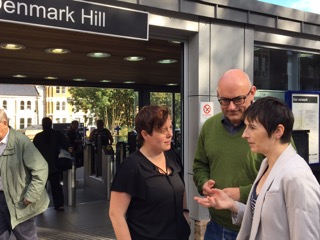After some chasing this is the current situation:
“6 April 2017
Our Ref: 33301153
Dulwich / Herne Hill flooding
Dear Councillor Barber
I write further to my email of 27 March regarding the information that was requested by your constituent, Susan Badman, in relation to our flood prevention and plans for the local area moving forward.
I can confirm that we have looked at how we react to flooding and identify potential leaks and an independent forensic review has been carried out to cover the November/December 2016 trunk mains failures in the above areas. This has looked at all areas of these specific failures and has identified generic points relating to the management of our 3,200km of trunk main sewers that will now be discussed at a forthcoming strategic review meeting. The findings of our review are due to be released publicly later this month.
At this time, we have not reported back to the Local Authority, Southwark Council, as suggested. We will however, arrange meetings and consultations once our plans have been finalised. I will be responsible for arranging these meetings and would be more than happy to include you, should you so wish.
We are continuously looking to improve our services and invest in network upgrades where required. This includes an extensive mains replacement across London and we currently have several jobs in progress and also at a planning stage for both our distribution and trunk mains in the above area.
We are developing our programme of mains replacement across London. This includes looking at the distribution and trunk mains in the area. We have already replaced 0.5km in Grange Lane and are planning a further 2.1km in College Road. We are also investigating the mains around Dulwich to see if we need to replace any.
As well as the above investments and mains replacements, we also have our Victorian Mains Replacement (VMR) plan in place that is an independent scheme. This is to replace the aged Victorian mains across London with new and modern pipes that will offer more durability and less possibility of frequent bursts.
Leak detection also remains a key area for us as we seek to reduce the amount of water that becomes wasted. We actively look at new technology and are constantly trialling new methods to identify leaks at the earliest possible opportunity. We have dedicated teams that carry out proactive and regular sweeps of areas that have a high level of leaks. We have found that these teams operate best at night time when background noise is at a lower level.
I hope you find this information helpful. If you need to contact me regarding this matter, or wish to discuss any of our plans in more detail, please do not hesitate to call me. We are open between 9am and 5pm, Monday to Friday.
Yours sincerely
“


